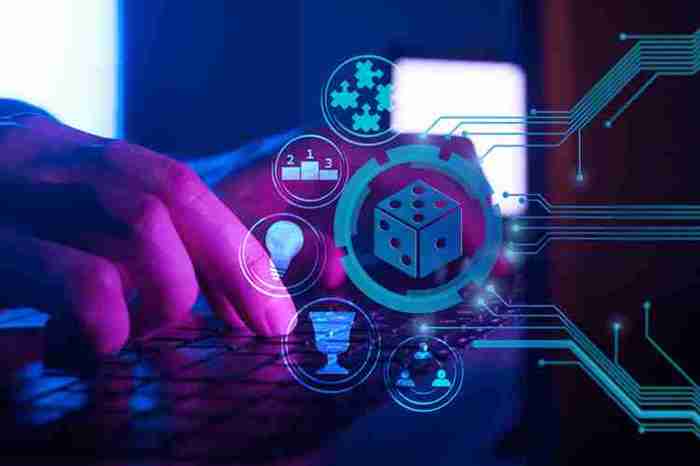Traditionally, cloud computing has focused on centralized cloud services into a handful of large datacenters. Centralization allowed resources to be highly scalable and shared more efficiently, while maintaining control and enterprise security. For example, when AI acts on data at the edge, it reduces the need for centralized compute power. Edge also makes blockchain better as more reliable data leads to greater trust and less chance of human error. Data can be captured and relayed directly by machines in real-time, and the increased use of sensors and cameras on the edge means more and richer data will become available to analyze and act on.

Milliseconds count when serving high-demand network applications, like voice and video calls. Because edge computing can greatly reduce the effects of latency on applications, service providers can offer new apps and services that can improve the experience of existing apps, especially following advancements in 5G. Any information that needs to be sent back to the data center can be encrypted before transmission. Enterprises also use edge computing to comply with data sovereignty laws, such as the General Data Protection Regulation (GDPR), by keeping any sensitive data close to the source. But the choice of compute and storage deployment isn’t limited to the cloud or the edge.
Where Is Edge Computing Used?
No matter which variety of edge computing interests you — cloud edge, IoT edge or mobile edge — be sure that you find a solution that can help you accomplish the following goals. Lenovo is the first company of its kind to bundle everything you need to implement powerful AI tools into one subscription. Our AI Innovators connect you with powerful AI technology solutions supported by the most powerful Edge servers on the market.
Securing a distributed edge computing network can be difficult and often require physical access to each individual deployed device. Additionally, adding several edge computing devices increases the surface area for attacks. Nevertheless, edge computers come equipped with TPM 2.0 that secured devices from physical attacks through authentication and key management. One of the benefits of deploying edge computers is that they enable predictive maintenance.
Eliminates Latency
An organization that wants to go this route can simply ask a vendor to install its own hardware, software and networking and pay a regular fee for use and maintenance. However, when they do, you can expect the same seismic change that occurred when cloud computing first burst onto the scene. Coinciding with the steady rise of edge computing is the introduction of 5G connectivity.
This significantly reduces the amount of data that data centers have to process or store. This architecture can cause a number of problems in the event of a network outage. Edge computing can bring the data storage and processing centers close to the smart home and reduce backhaul costs and latency. The importance of edge computing lies in its potential to improve efficiency and speed by reducing the distance between data processing and data creation. By situating computing and storage closer to the edge device where resources are needed and latency is a critical factor, edge computing can provide faster, more reliable service than traditional cloud-based systems. For an example of edge computing driven by the need for real-time data processing, think of a modern manufacturing plant.
What is edge computing? Everything you need to know
All of the raw data that’s generated must be processed and stored, necessitating the need for edge computing devices to process and store data locally to ease the burden placed on data centers. Telecom providers increasingly run their networks with network functions virtualization (NFV), using virtual machines running on standard hardware at the network edge. An edge computing strategy enables the providers to keep the software at tens of thousands of remote locations all running consistently and with uniform security standards. Applications running close to the end user in a mobile network also reduce latency and allow providers to offer new services.
- Other examples involve predictive analytics that can guide equipment maintenance and repair before actual defects or failures occur.
- Powered by the cloud, edge computing enables businesses to reimagine experiences for people, purpose, and profitability, at speed and scale.
- Whenever personal data has to travel to the cloud, it gets exposed to a variety of security threats—either within the database itself or as it gets transmitted to the internet.
- It’s hard for tech companies to scale when they’re forced to buy, provision, and deploy new servers every few days.
- It is challenging to collect data from places with unreliable connectivity and bandwidth.
- We deliver hardened solutions that make it easier for enterprises to work across platforms and environments, from the core datacenter to the network edge.
- Computing was originally done using one large, centralized computer that often took up an entire room or section of a building.
This can be achieved by adopting a massively decentralized computing architecture, otherwise known as edge computing. Within each industry, however, are particular uses cases that drive the need for edge IT. The adoption of edge computing has brought about data analytics to a whole new level. More edge computing definition and more companies are relying on this technology for data-driven operations that require lightning-fast results. Get started with this course today to accelerate your career in cloud computing. Cloud gaming companies are looking to deploy their servers as close to the gamers as possible.
Real-time Processing Applications
On the other hand, cloud computing is a broad term that includes running all types of workloads in a cloud service provider’s data center. Companies put storage, servers, and other edge devices next to the data source. For example, an energy company might install some server racks and a remote LAN within a wind turbine to collect and process the data it generates.
The traditional computing paradigm built on a centralized data center and everyday internet isn’t well suited to moving endlessly growing rivers of real-world data. Bandwidth limitations, latency issues and unpredictable network disruptions can all conspire to impair such efforts. Businesses are responding to these data challenges through the use of edge computing architecture. Data is the lifeblood of modern business, providing valuable business insight and supporting real-time control over critical business processes and operations. Edge PCs are also often deployed as IoT gateways for smart agriculture applications. For example, edge computing solutions are often used to gather, process, and analyze weather conditions, soil moisture, sunlight, and other variables to improve the growth of crops.
What are the advantages of edge computing?
Other benefits of edge computing include the ability to conduct on-site big data analytics and aggregation, which is what allows for near real-time decision making. Edge computing further reduces the risk of exposing sensitive data by keeping all of that computing power local, thereby allowing companies to enforce security practices or meet regulatory policies. Computing tasks demand suitable architectures, and the architecture that suits one type of computing task doesn’t necessarily fit all types of computing tasks. Edge computing has emerged as a viable and important architecture that supports distributed computing to deploy compute and storage resources closer to — ideally in the same physical location as — the data source. In general, distributed computing models are hardly new, and the concepts of remote offices, branch offices, data center colocation and cloud computing have a long and proven track record.

Think about devices that monitor manufacturing equipment on a factory floor or an internet-connected video camera that sends live footage from a remote office. Instead of one video camera transmitting live footage, multiply that by hundreds or thousands of devices. Not only will quality suffer due to latency, but the bandwidth costs can be astronomical. IoT needs compute power closer to where a physical device or data source is located.
What Is an Edge?
The first vital element of any successful technology deployment is the creation of a meaningful business and technical edge strategy. Understanding the “why” demands a clear understanding of the technical and business problems that the organization is trying to solve, such as overcoming network constraints and observing data sovereignty. Edge computing is a distributed information technology (IT) architecture in which client data is processed at the periphery of the network, as close to the originating source as possible. He says that cars and traffic control systems will need to constantly sense, analyze, and swap data to function correctly.

